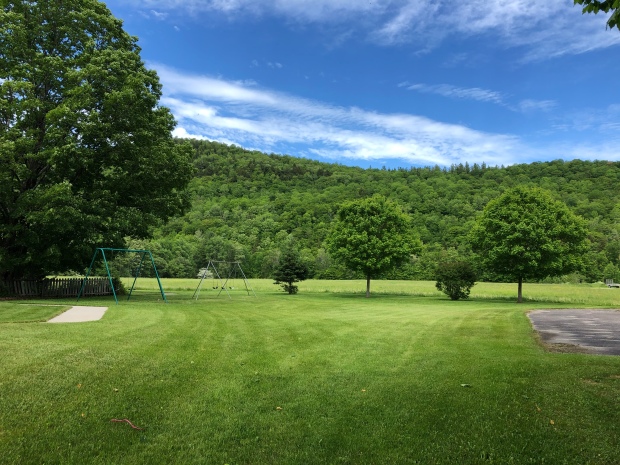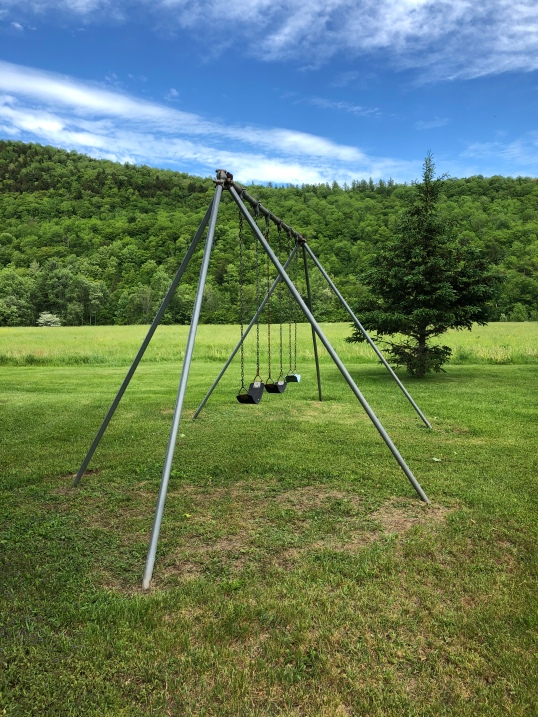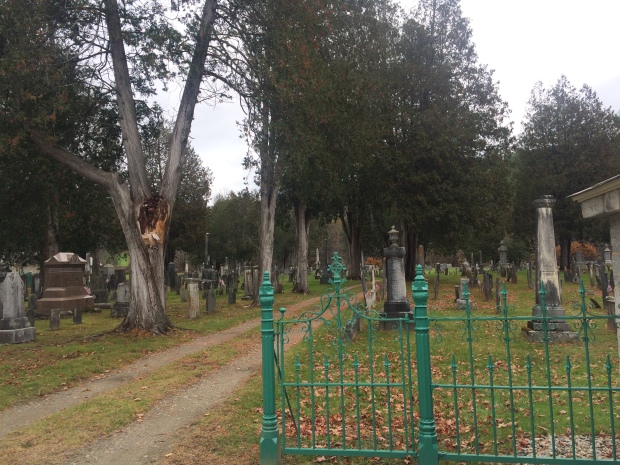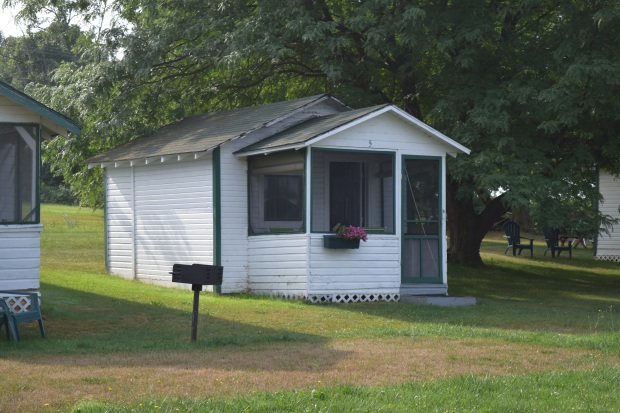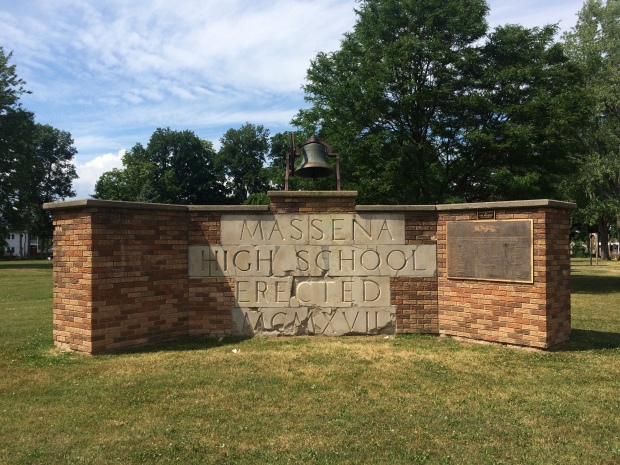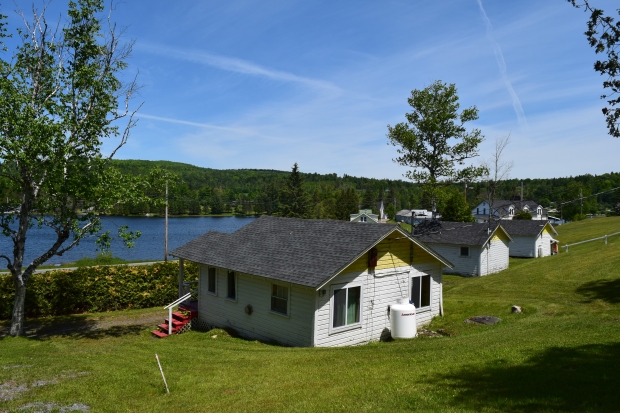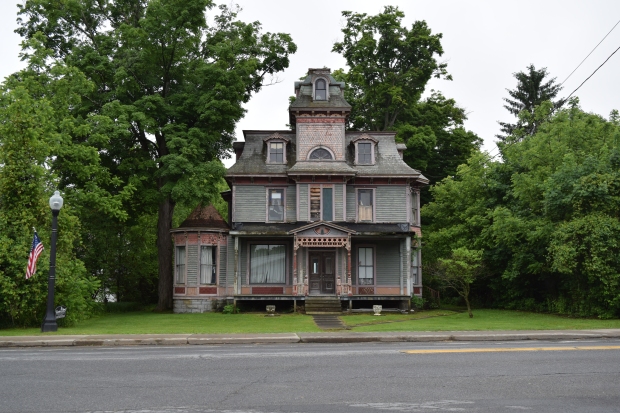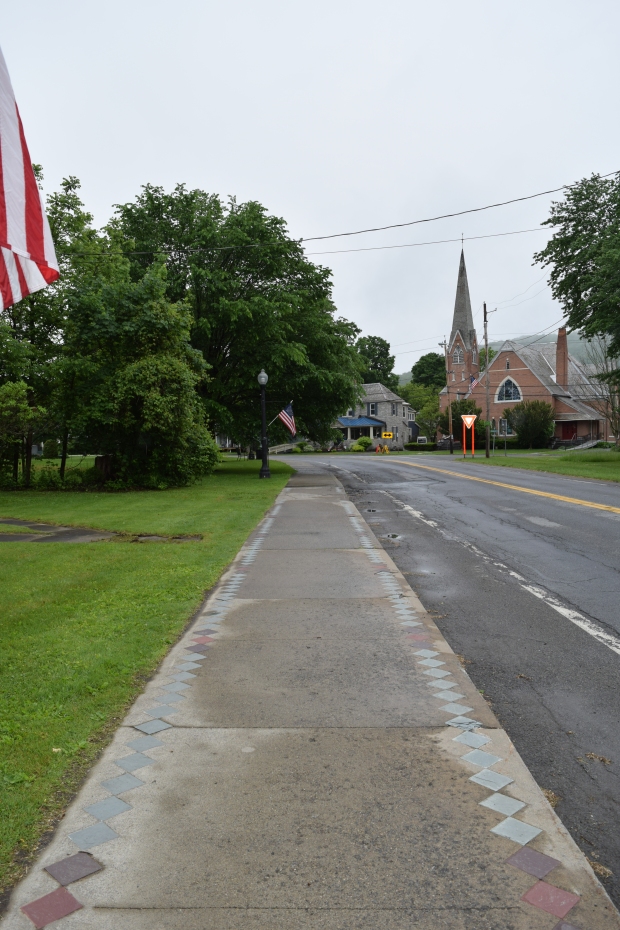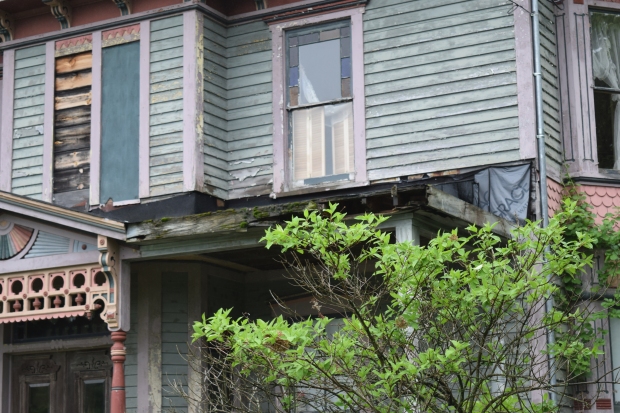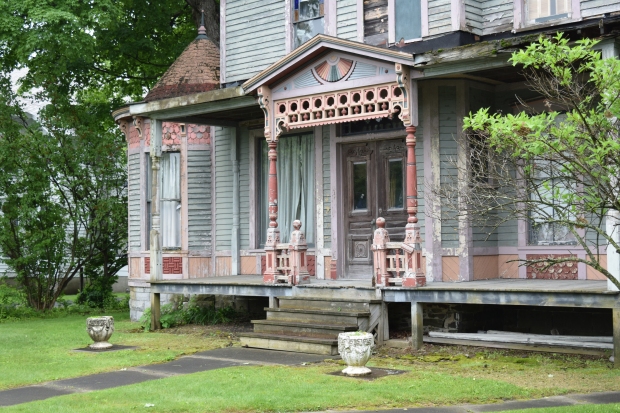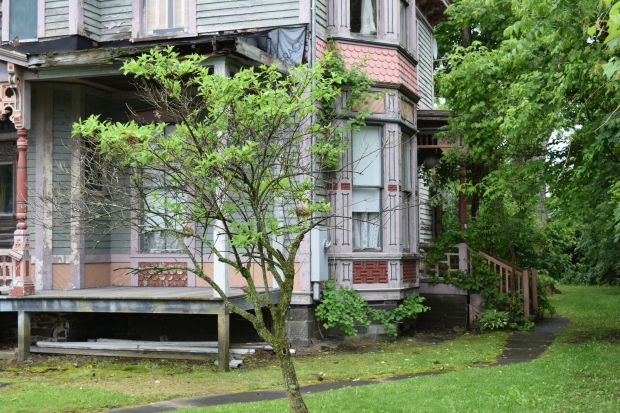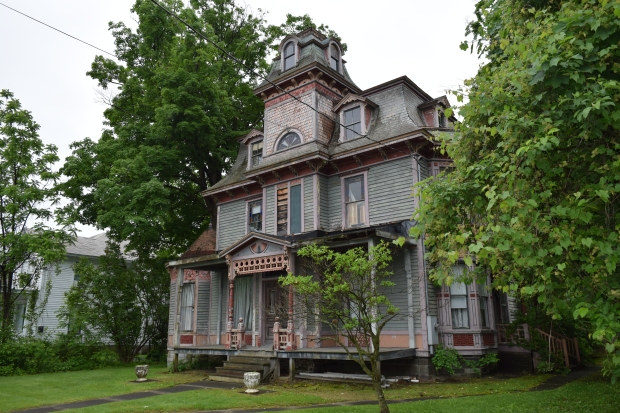Playgrounds from the 1970s are almost extinct, at least the interesting (read: fun) equipment. Finding one in the wild is a treat and a scavenger hunt. By pure luck, while driving south on I-95 in Virginia, I caught a glimpse of what looked like a playground. I saw a metal spaceship-looking apparatus, which I assumed was a playground – or a carnival ride. Unable to switch lanes and get off at the exit, I made a mental note of the mile marker so I could search later.
Since I could knew it could be seen from the interstate, I traveled up and down I-95 on Google Earth until I spotted what looked like the spaceship playground (how I described it in my head). With the help of Google Street View, I found it! I was pretty certain I knew the manufacturer of the playground at this point (because I am a nerd and spend lots of time studying historic playgrounds). Fortunately, I had the return trip to look forward to so we could stop and check out this playground.
The playground is set between the interstate and a questionable motel that appears half operating, half closed. The restaurant on the property is closed and any reviews you read of the hotel are terrible. To get to the playground, you have to drive around to the back of the hotel.
This is what I expected to find (bottom right):

Parks & Recreation August 1974. Source: Nels Olsen, Flickr (username: nels_P_Olsen).
And this is what I found:

Playground view from the parking lot (June 2018).
It matches! I’m not ashamed to say that my excitement rivaled that of my childhood self. And if it weren’t 100 degrees outside, I would have slid down the slides and tested out the swings. Those old playgrounds can burn in the hot summer sun, as most of you probably know. Alas, I had to settle for climbing to the top and taking photographs.

Miracle/Jamison ca. 1975 playground, Mark IV Imagine City model.
Take a look at the advertisement images below. You can see that the playground is indeed the Miracle/Jamison model, and there are slight differences in the configurations displayed. This playground has the central tower (center), 2-deck satellite tower (left), the tornado slide (right), a large wave slide (left) and a small wave slide (center), among the elements.

Source: Parks & Recreation Journal, April 1975, page 3. Miracle & Jamison ad. See full page below.
I’ve never seen such an elaborate, metal playground. How does this playground exist in 2018? Most have been removed in the 1990s for safety reasons and CPSC regulations, and because of lawsuits (including this 1985 lawsuit that required all tornado slides be removed). I assume that because this is on private property (hotel property) it has seen less use than a public playground and it is not in the most accessible location, and it seems structurally sound, so no one is forcing the owners to remove it. I hope it stays around for a while. Now, how about a tour of the playground, and some historical context?

The playground is not maintained, as you can tell by the high grass.

Wave slide in the center.
If the playground says “spaceship” to you, then you’re thinking in the right mindset. Playground equipment of the 1960s-70s had a space theme to it. Think of it in American historical context: the era of NASA, the Space Age, the moon landing, adventure, the unknown. Consider Googie architecture (mid-century design influenced by the Space Age) and the famous LAX airport theme building, resembling a flying saucer landing on its legs. Doesn’t this playground remind you of the terminal?
Playground equipment followed suit for architecture and societal interests. The names of equipment included radar screens, satellites, rockets, lunar lander, space cruiser, geodesic dome, and others. When you think about playground design it that way, it’s easy to spot playgrounds from the 1960s and 1970s. It’s another example as to how our built environment tells our history.
Now, back to the playground tour:

View from above.

View to the lowest platform.

Looking down: You can also climb up the central satellite tower to get to the highest platform.
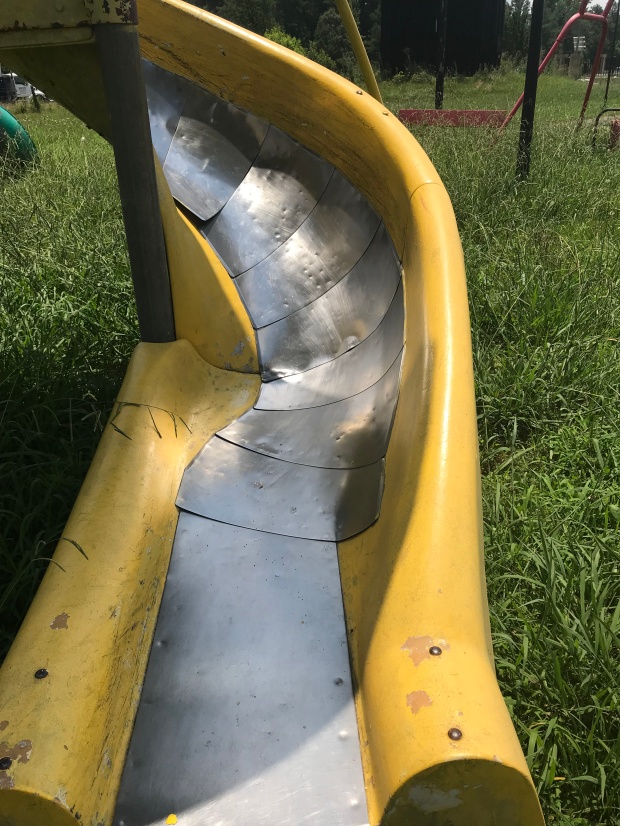
The tornado slide. I’ll admit, this slide looks painful in the hot sun (maybe even dangerous).

The 2-deck satellite tower. You can climb ladders (through the circles to platforms) to move up this tower and access the slide or move to other sections of the playground.

View from the platform.

Stair details.

It looks like a slide used to be here.

Not only did this playground have a Mark IV Imagine City, but it also had swings and other apparatus.
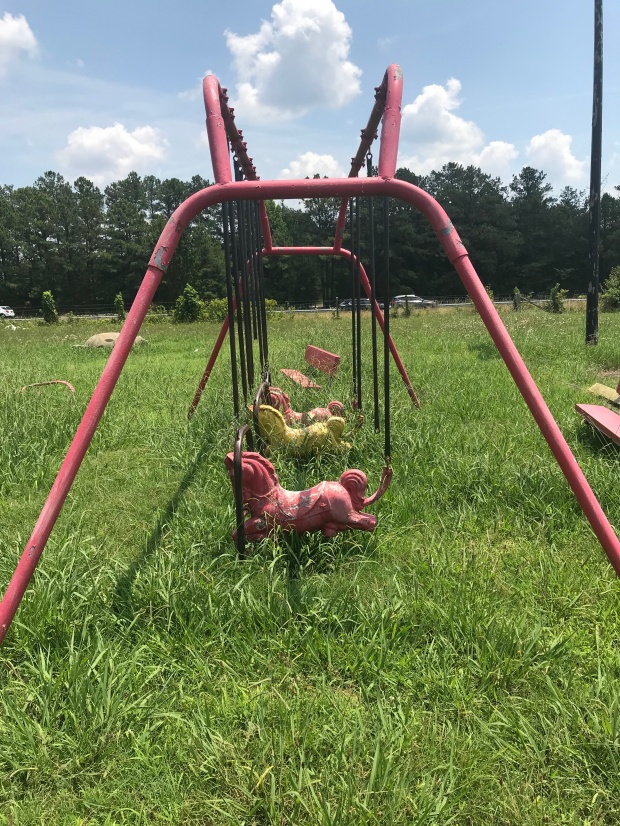
Flying Pony Swings. I looked for a stamp on these pieces to identify the company, but no luck.

Spring rider.

Concrete creature hiding in the grass, commonly seen in the 1960s.

This playground even has a basketball court with a low-hoop, clearly for the little kids.

Some sort of shuffleboard/mini golf course next to the playground.
Have you seen a playground like this recently? Do you remember playing on one of these playgrounds? Enjoy, and keep your eyes out for playgrounds, big or small. In the meantime, if you’re in need of an internet rabbit hole, check out these advertisements from Miracle Equipment company.



